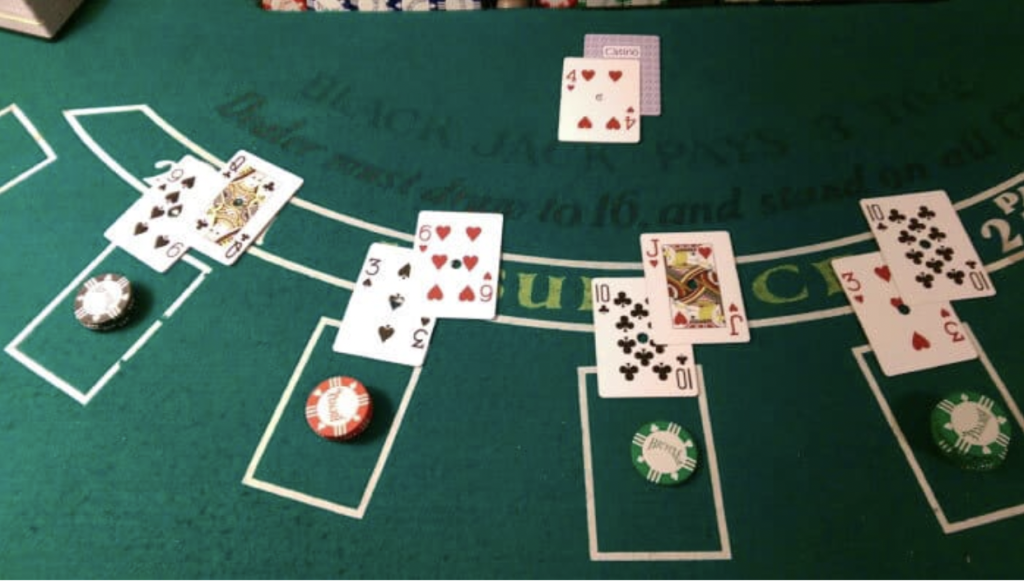
A Beginner’s Guide to Understanding Sports Betting Odds
Post on 15 Jun, 2024 By Admin
If you’re new to sports betting, one of the first things you’ll need to understand is betting odds. Odds are at the heart of every bet, determining not only how much you can potentially win but also giving you an insight into the probability of certain outcomes. Whether you’re betting on football, basketball, or any other sport, knowing how to read and interpret odds is essential. In this guide, we’ll break down the basics of sports betting odds and explain how they work.
What Are Sports Betting Odds?
At their core, sports betting odds represent the probability of an event happening, as well as the potential return on a bet. In simple terms, odds show you how much you can win relative to your stake and indicate how likely a particular outcome is to occur. There are several formats for presenting odds, and understanding each of them is key to making informed betting decisions.
Types of Sports Betting Odds
-
Fractional Odds
This is the most common odds format in the UK. Fractional odds are presented as a fraction, such as 5/1 or 10/3. The first number (the numerator) represents how much you can win from a bet in relation to the second number (the denominator), which represents how much you stake. For example, if you bet £10 at 5/1, you would win £50 (5 times your stake), plus your original £10 stake back, for a total of £60.
- Example: 5/1 means you win £5 for every £1 you bet.
-
Decimal Odds
Common in Europe, Canada, and Australia, decimal odds are the simplest to understand. They represent the total payout (your stake plus profit) for every £1 wagered. For instance, decimal odds of 3.00 mean that for every £1 you wager, you’ll receive £3 back, which includes your stake.
- Example: 3.00 means a £1 bet returns £3, including your stake.
-
American (Moneyline) Odds
Popular in the United States, American odds are either positive (+) or negative (-). Positive odds show how much profit you would make on a $100 bet, while negative odds show how much you need to stake to win $100. For example, +150 means a $100 bet would win $150, while -150 means you would need to bet $150 to win $100.
- Example: +150 means you win $150 for every $100 bet; -150 means you need to bet $150 to win $100.
-
Implied Probability
Odds also tell you the implied probability of an event happening. The implied probability is the chance, expressed as a percentage, that the bookmaker thinks an outcome will occur. The lower the odds, the higher the implied probability, and vice versa.
- Formula for implied probability (for decimal odds):
Implied Probability=1Decimal Odds×100\text{Implied Probability} = \frac{1}{\text{Decimal Odds}} \times 100
For example, if the odds are 3.00, the implied probability would be 33.33%.
How to Read Betting Odds
Betting odds may seem complicated at first, but once you understand the different formats and how they work, it becomes much easier. Here’s how to interpret them:
- Fractional Odds: If you see odds like 3/1, this means for every £1 you wager, you could win £3 (plus your stake).
- Decimal Odds: A decimal odd of 2.50 means you will receive £2.50 for every £1 you bet, including your stake.
- Moneyline Odds: If you see +200, you will win $200 for every $100 bet, while -200 means you must stake $200 to win $100.
Betting Odds and Their Impact on Payouts
The odds you see also directly affect the size of the payout you’ll receive if your bet wins. Higher odds mean bigger potential payouts but come with a lower likelihood of the event occurring. Lower odds indicate higher likelihood but result in smaller payouts.
Example of how payouts work with different odds:
- Betting £10 on 5/1 fractional odds: If you win, you will receive £50 in profit plus your £10 stake back, making a total of £60.
- Betting £10 on 3.00 decimal odds: If you win, you will receive £30 (3 times your £10 stake), including your £10 stake.
- Betting £10 on -150 American odds: If you win, you will receive £16.67 in profit plus your £10 stake back, making a total of £26.67.
Calculating Value Bets
Understanding odds is crucial for calculating value bets, which occur when you believe the bookmaker has underestimated the probability of an outcome. A value bet is a wager where the potential return exceeds the inherent risk, offering bettors an edge.
Formula for calculating value:
- Step 1: Calculate the implied probability of the odds.
- Step 2: Assess whether your research suggests the event has a higher likelihood of happening than the odds imply.
- Step 3: If your estimation of the probability is higher, the bet may be considered a value bet.
Popular Sports Betting Strategies
- Betting Against the Public: Sometimes, betting on outcomes that others overlook can lead to a greater edge, especially if a betting market has overreacted to public sentiment.
- Understanding Betting Lines: The line (or spread) is the point difference between two teams or competitors. Betting on the spread can offer value if you feel the market has misjudged the team’s performance.
- Bankroll Management: Proper bankroll management is crucial for long-term betting success. Never wager more than you can afford to lose, and spread your bets to minimise risks.
Conclusion
Understanding sports betting odds is essential for anyone looking to get involved in sports betting. Whether you’re using fractional, decimal, or American odds, the key is to grasp how they reflect probability and payouts. By familiarising yourself with how odds work and how to calculate value bets, you’ll improve your chances of making smarter betting decisions. Always remember that betting should be done responsibly, and the ultimate goal is to enjoy the experience while minimising risk.
If you’re new to sports betting, one of the first things you’ll need to understand is betting odds. Odds are at the heart of every bet, determining not only how much you can potentially win but also giving you an insight into the probability of certain outcomes. Whether you’re betting on football, basketball, or any other sport, knowing how to read and interpret odds is essential. In this guide, we’ll break down the basics of sports betting odds and explain how they work.
What Are Sports Betting Odds?
At their core, sports betting odds represent the probability of an event happening, as well as the potential return on a bet. In simple terms, odds show you how much you can win relative to your stake and indicate how likely a particular outcome is to occur. There are several formats for presenting odds, and understanding each of them is key to making informed betting decisions.
Types of Sports Betting Odds
-
Fractional Odds
This is the most common odds format in the UK. Fractional odds are presented as a fraction, such as 5/1 or 10/3. The first number (the numerator) represents how much you can win from a bet in relation to the second number (the denominator), which represents how much you stake. For example, if you bet £10 at 5/1, you would win £50 (5 times your stake), plus your original £10 stake back, for a total of £60.
- Example: 5/1 means you win £5 for every £1 you bet.
-
Decimal Odds
Common in Europe, Canada, and Australia, decimal odds are the simplest to understand. They represent the total payout (your stake plus profit) for every £1 wagered. For instance, decimal odds of 3.00 mean that for every £1 you wager, you’ll receive £3 back, which includes your stake.
- Example: 3.00 means a £1 bet returns £3, including your stake.
-
American (Moneyline) Odds
Popular in the United States, American odds are either positive (+) or negative (-). Positive odds show how much profit you would make on a $100 bet, while negative odds show how much you need to stake to win $100. For example, +150 means a $100 bet would win $150, while -150 means you would need to bet $150 to win $100.
- Example: +150 means you win $150 for every $100 bet; -150 means you need to bet $150 to win $100.
-
Implied Probability
Odds also tell you the implied probability of an event happening. The implied probability is the chance, expressed as a percentage, that the bookmaker thinks an outcome will occur. The lower the odds, the higher the implied probability, and vice versa.
- Formula for implied probability (for decimal odds):
Implied Probability=1Decimal Odds×100\text{Implied Probability} = \frac{1}{\text{Decimal Odds}} \times 100
For example, if the odds are 3.00, the implied probability would be 33.33%.
- Formula for implied probability (for decimal odds):
How to Read Betting Odds
Betting odds may seem complicated at first, but once you understand the different formats and how they work, it becomes much easier. Here’s how to interpret them:
- Fractional Odds: If you see odds like 3/1, this means for every £1 you wager, you could win £3 (plus your stake).
- Decimal Odds: A decimal odd of 2.50 means you will receive £2.50 for every £1 you bet, including your stake.
- Moneyline Odds: If you see +200, you will win $200 for every $100 bet, while -200 means you must stake $200 to win $100.
Betting Odds and Their Impact on Payouts
The odds you see also directly affect the size of the payout you’ll receive if your bet wins. Higher odds mean bigger potential payouts but come with a lower likelihood of the event occurring. Lower odds indicate higher likelihood but result in smaller payouts.
Example of how payouts work with different odds:
- Betting £10 on 5/1 fractional odds: If you win, you will receive £50 in profit plus your £10 stake back, making a total of £60.
- Betting £10 on 3.00 decimal odds: If you win, you will receive £30 (3 times your £10 stake), including your £10 stake.
- Betting £10 on -150 American odds: If you win, you will receive £16.67 in profit plus your £10 stake back, making a total of £26.67.
Calculating Value Bets
Understanding odds is crucial for calculating value bets, which occur when you believe the bookmaker has underestimated the probability of an outcome. A value bet is a wager where the potential return exceeds the inherent risk, offering bettors an edge.
Formula for calculating value:
- Step 1: Calculate the implied probability of the odds.
- Step 2: Assess whether your research suggests the event has a higher likelihood of happening than the odds imply.
- Step 3: If your estimation of the probability is higher, the bet may be considered a value bet.
Popular Sports Betting Strategies
- Betting Against the Public: Sometimes, betting on outcomes that others overlook can lead to a greater edge, especially if a betting market has overreacted to public sentiment.
- Understanding Betting Lines: The line (or spread) is the point difference between two teams or competitors. Betting on the spread can offer value if you feel the market has misjudged the team’s performance.
- Bankroll Management: Proper bankroll management is crucial for long-term betting success. Never wager more than you can afford to lose, and spread your bets to minimise risks.
Conclusion
Understanding sports betting odds is essential for anyone looking to get involved in sports betting. Whether you’re using fractional, decimal, or American odds, the key is to grasp how they reflect probability and payouts. By familiarising yourself with how odds work and how to calculate value bets, you’ll improve your chances of making smarter betting decisions. Always remember that betting should be done responsibly, and the ultimate goal is to enjoy the experience while minimising risk.



